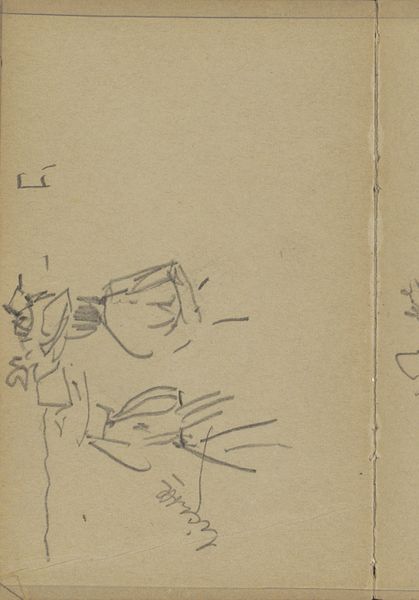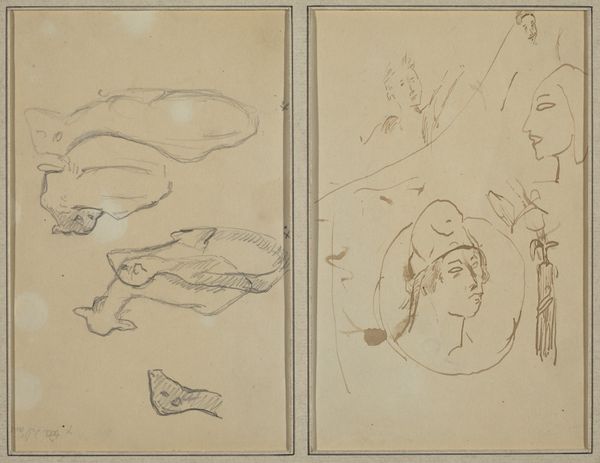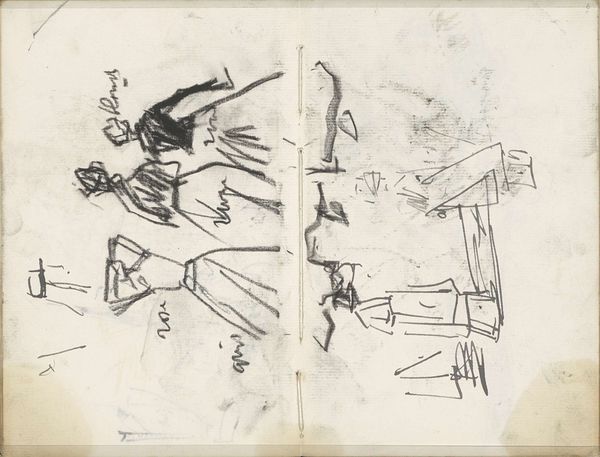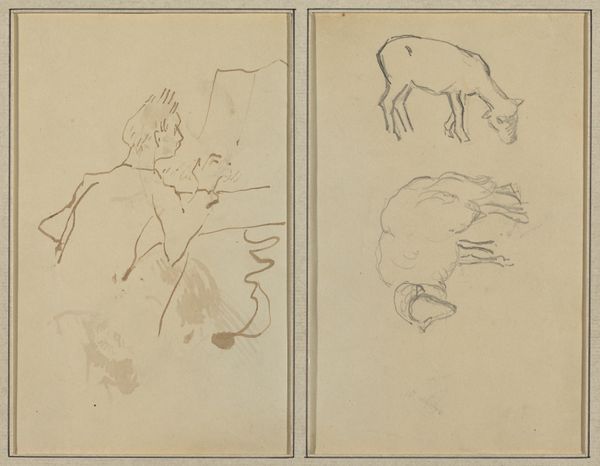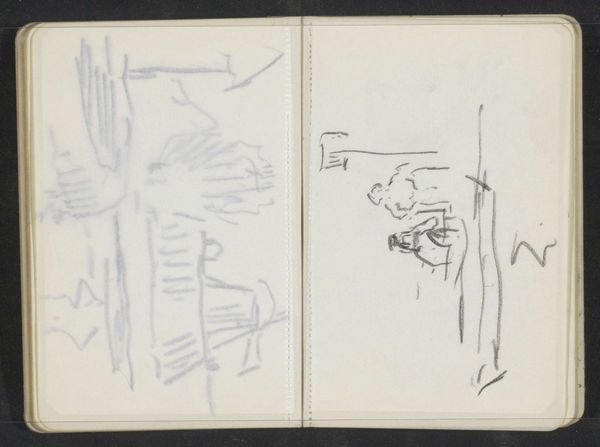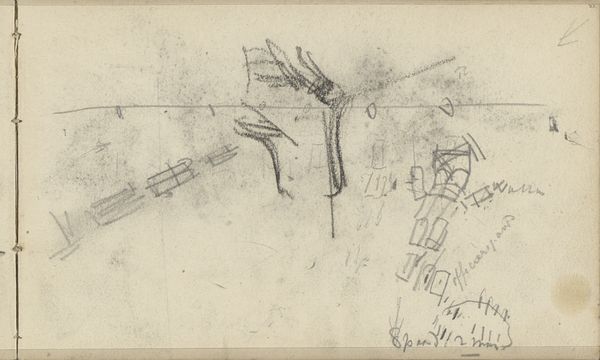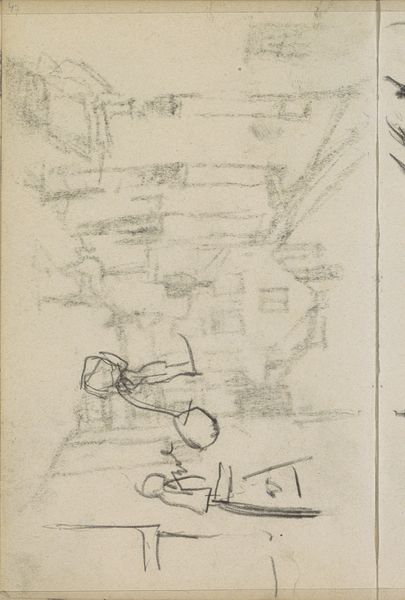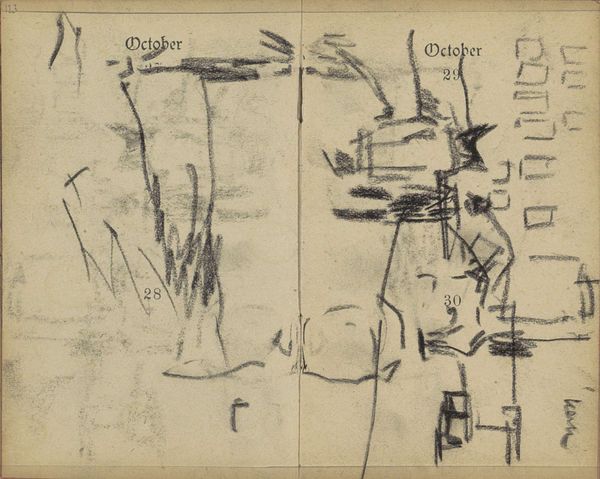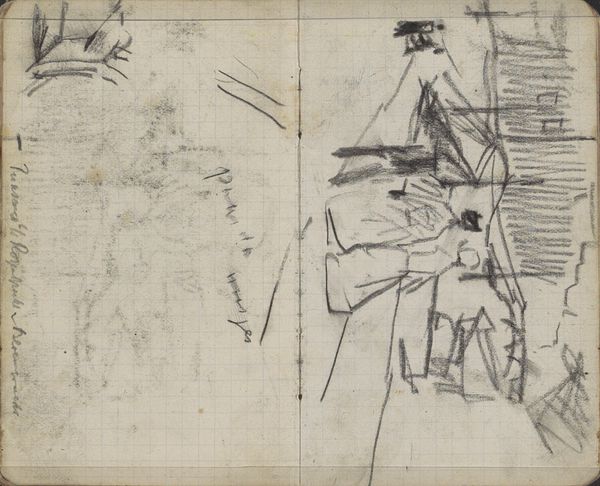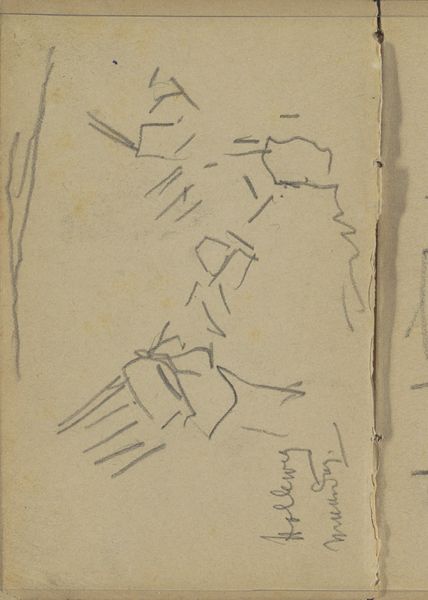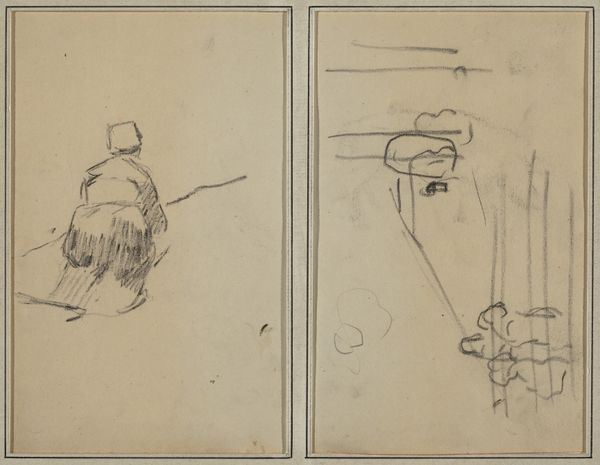![Group of Human Forms; A Man Seated [recto] by Paul Gauguin](/_next/image?url=https%3A%2F%2Fd2w8kbdekdi1gv.cloudfront.net%2FeyJidWNrZXQiOiAiYXJ0ZXJhLWltYWdlcy1idWNrZXQiLCAia2V5IjogImFydHdvcmtzL2RkNGQzMzZjLTI4ZDktNDczMS04NjE0LTRiMmRiMjA0MWNiMC9kZDRkMzM2Yy0yOGQ5LTQ3MzEtODYxNC00YjJkYjIwNDFjYjBfZnVsbC5qcGciLCAiZWRpdHMiOiB7InJlc2l6ZSI6IHsid2lkdGgiOiAxOTIwLCAiaGVpZ2h0IjogMTkyMCwgImZpdCI6ICJpbnNpZGUifX19&w=3840&q=75)
drawing
#
portrait
#
drawing
#
impressionism
#
landscape
#
figuration
Dimensions: overall: 16.9 x 22.6 cm (6 5/8 x 8 7/8 in.)
Copyright: National Gallery of Art: CC0 1.0
Editor: Here we have Paul Gauguin's "Group of Human Forms; A Man Seated" from 1884 to 1888. It's a drawing, seemingly a study with loosely rendered figures and landscapes. There's a quiet, almost melancholic feel to it. What do you see in this piece, especially considering the time it was created? Curator: What I find particularly interesting is Gauguin's departure from strict academic representation, even at this stage. We see him grappling with depicting modern life, but in a way that almost abstracts the figures, moving towards symbolism. Consider the art world at this time – Impressionism was challenging established norms, but Gauguin pushes further. It anticipates his later explorations of primal themes in Tahiti. These early works hint at his developing artistic and personal rebellion against societal conventions, visible through this very style of simple yet expressive drawing. Do you notice how he isolates the figures? Editor: Yes, there’s a definite sense of isolation, even among the “group.” Is this typical of artists breaking away from traditional portrayals of society? Curator: It can be. Representing isolation could be read as a social commentary, right? Perhaps Gauguin is responding to a feeling of alienation prevalent in rapidly modernizing Europe. The fragmented composition itself, divided into separate scenes, might symbolize a fracturing of social cohesion. These images may invite questions regarding representation of common men in European artwork during this time. Editor: That’s fascinating! I hadn’t considered the composition reflecting societal fragmentation. I tend to interpret it solely through the lens of his later work, but now I understand its place within broader historical and cultural shifts. Curator: Exactly. The politics of imagery are never separate from the socio-political forces at play. Even seemingly simple sketches can hold profound cultural significance when examined through a historical lens.
Comments
No comments
Be the first to comment and join the conversation on the ultimate creative platform.
